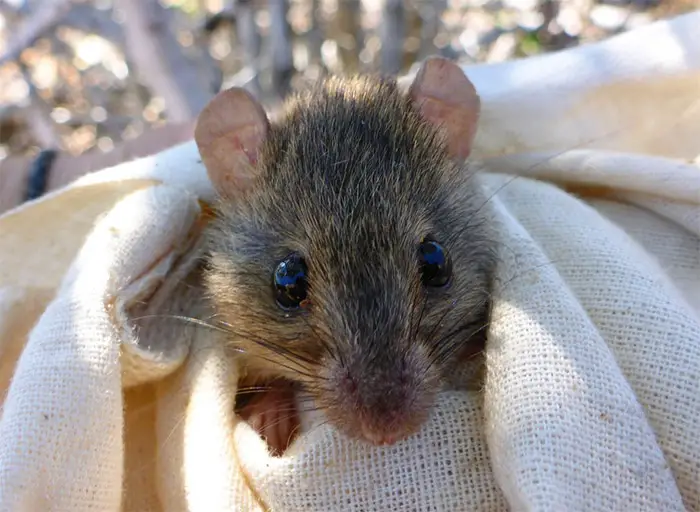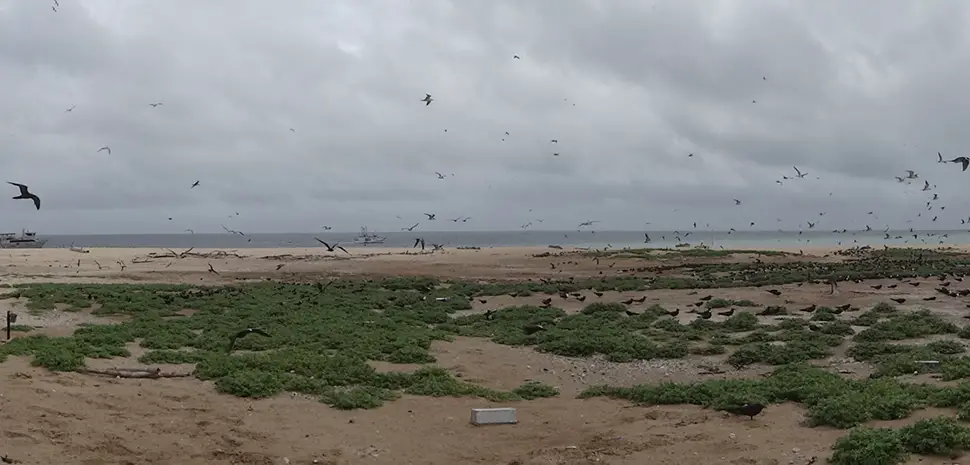
17th June 2016 The first recorded mammalian extinction due to anthropogenic climate change Australian researchers have announced that the Bramble Cay melomys is now likely extinct, adding: "Significantly, this probably represents the first recorded mammalian extinction due to anthropogenic climate change."
University of Queensland and Queensland Government researchers have confirmed that the Bramble Cay melomys – the only mammal species endemic to the Great Barrier Reef – is the first mammal to go extinct due to human-induced climate change. In their newly published report, the scientists describe how a comprehensive survey failed to find any trace of the rodent, which is also known as the mosaic-tailed rat. The animals were known only to live on a small island, Bramble Cay, just 340m long and 150m wide (1,120 ft × 490 ft) in the Torres Strait, between Australia and Papua New Guinea. "Because a limited survey in March 2014 failed to detect the species, Bramble Cay was revisited from August to September 2014, with the explicit aims of establishing whether the Bramble Cay melomys still persisted on the island and to enact emergency measures to conserve any remaining individuals," said Dr Luke Leung, from the University of Queensland's School of Agriculture and Food Sciences. "A thorough survey effort involving 900 small animal trap-nights, 60 camera trap-nights and active daytime searches produced no records of the species, confirming that the only known population of this rodent is now extinct. Anecdotal information obtained from a professional fisherman who visited Bramble Cay annually for the past 10 years suggested that the last known sighting of the Bramble Cay melomys was made in late 2009." When first recorded by European sailors in 1845, the animals were seen in high density on the island. Ship crews reported shooting these "large rats" with their bows and arrows. In 1978, there were estimated to be several hundred melomys, but their numbers dwindled rapidly in subsequent decades. Just 10 were captured during a 2002 survey and 12 in 2004. The fact that such exhaustive efforts have now failed to record a single living animal at their only known location, while extensive surveys have not found it on any other islands along the Torres Strait or Great Barrier Reef, gives Dr Leung confidence that Australia has lost another mammal species.
The key factor responsible for the destruction of this population was almost certainly ocean inundation of the low-lying cay, Dr Leung said – very likely on multiple occasions during the past decade, causing dramatic habitat loss and perhaps also direct mortality of individuals. At its highest point, the cay sits just 3m (9.8 ft) above sea level. Around the Torres Strait, sea level rose at almost twice the global average rate between 1993 and 2014. "Available information about sea-level rise and the increased frequency and intensity of weather events – producing extreme high water levels and damaging storm surges in the Torres Strait region over this period – point to human-induced climate change being the root cause of the loss of the Bramble Cay melomys," Leung said. "Significantly, this probably represents the first recorded mammal extinction due to anthropogenic climate change." The International Union for Conservation of Nature and Natural Resources (IUCN) lists one other mammal – the Little Swan Island hutia – that was driven to extinction partly by extreme weather (the severe hurricane Janet in 1955). However, cats being introduced onto the island were considered the primary driver of their disappearance. In contrast, the Bramble Cay melomys has been lost "solely (or primarily) due to anthropogenic climate change."
Anthony D. Barnosky, a professor at the University of California, Berkeley, is a leading expert on the impacts of climate change on biodiversity. He called the disappearance of the melomys "a cogent example of how climate change provides the coup de grâce to already critically endangered species." "I think this is significant because it illustrates how the human-caused extinction process works in real time," Dr. Barnosky added, noting that rising seas and storm surges had wiped out a species that had no possible escape route. "On land, we're seeing the same thing, except rather than water barriers, the barriers are the 51% of the Earth's land surface that has been taken over by people." The loss of the Bramble Cay melomys is likely just the tip of the iceberg. There is widespread talk among scientists that Earth has entered a new geological era – termed the Anthropocene – with strong evidence that a sixth mass extinction is imminent. If the global average temperature increase exceeds 3.5°C (6.3°F), model projections suggest major extinctions (40-70% of species assessed) around the globe. ---
Comments »
|









